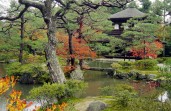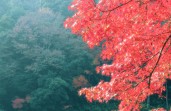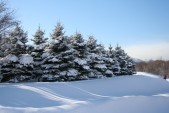Seasons
Stretching 3,000km north to south, Japan has a varied climate with icy Hokkaido in the north and the small sub-tropical islands in the south. The four distinct seasons allows the visitor to enjoy a wealth of scenic beauty at any time of the year.
Spring
The season for cherry blossom viewing is certainly one of the most popular times to visit Japan. From the first of March, when flowering plum blossoms emerge, to the last days of May, when the last flowering cherry blossoms are falling from the trees, spring is a time when families and friends from all over the country can be seen gathering in parks for flower-viewing parties known as Hanami. Spring is a favourite time of the year for young Japanese children. Hinamatsuri, Doll’s Festival is celebrated on March 3. Throughout Japan young girls display their dolls for all their friends to admire. Kodomo no Hi, Children’s Day is celebrated on May 5. This is a national holiday in Japan and is famous for the colourful carp shaped kites that fill with wind and appear to be swimming in the breeze. They are hung from flag poles outside schools, homes and shops throughout Japan.
The average temperature range during the spring months (March, April, May) is 8 to 15 degrees celsius.
Summer
With its long exposed seacoast, Japan’s seaside is the place to be during the summer months. Summer is school holiday time in Japan with many students enjoying activities such as hiking, climbing and beach activities. For the adventure seekers, summer is the ideal time for those interested in climbing Japan’s famous Mt. Fuji. The climbing season extends from July 1 to August 31. Professional baseball can be seen at many of the major cities during the summer months. Summer is the season of rice planting and is often called the ‘Season of Greenery’. Children set up bamboo branches throughout the streets to celebrate Tanabata Star Festival. This festival has been celebrated for more than 1000 years. Written poems, wishes and decorations are tied to the branches as an offering to the stars. In summer, fireworks are displayed at festivals throughout Japan with the grandest fireworks display on the Sumida River, Tokyo. The most noted summer festival in Japan is the Gion Matsuri of Kyoto. This festival lasts for a few days culminating in a gala parade of dozens of floats carried by happi-coated men and women.
The average temperature range during the summer months (June, July, August) is 23 to 31 degrees celsius.
Autumn
Autumn in Japan brings swirls of changing leaves, in vivid hues of crimson, gold, bronze yellow. This is the season of harvest, as well as a time of sport's carnivals and festivals around the country. The Jidai Matsuri of Kyoto on 22nd October features a procession of more than 2000 people in colourful costumes from the 8th to the 19th century. The Autumn Festival of Toshogu Shrine in Nikko takes place on October 17th. This festival features troops of warriors in full samurai armour. In the heart of the Hida Mountains, is a traditional town known as Takayama. Each year in Spring and Autumn, Takayama appeases the gods with a spectacular festival which features carved wooden floats that are paraded day and night through the main streets of town. Many tourists flock to these areas to catch a glimpse of the vibrant autumn colours and colourful festivals. The cool, crisp autumn days are the ideal time to enjoy sightseeing in Japan.
The average temperature range during the autumn months (September, October, November) is 14 to 22 degrees celsius.


